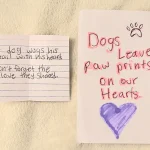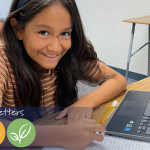Each month, we are pleased to host one on the blog one of the teachers who is running Letters to a Pre-Scientist in her classroom. This post is from Stephanie Lane, an eleven year veteran teacher in the South Bronx. Her love of science is in Ecology, Evolution, and Decomposition. In her free time I am an avid community gardener and marathoner. This is her first year working with Letters to a Pre-Scientist.
Real learning, attentive, real learning, deep learning, is playful and frustrating and joyful and discouraging and exciting and sociable and private all the time, which is what makes it great. -Eleanor Duckworth
 One of the first activities I completed with my incoming sixth graders was a history of past science class experiences. For students in the South Bronx, I quickly learned that these past experiences were minimal. “A lady pushed a cart into our classroom once a week and we watched her do science.” “We copied notes and answered questions from the textbooks into our journals.” Many of my students simply never received science education. This is a choice schools make when they feel the pressure of state math and reading exams – a choice that I can not fault schools for, but rather is the fault of a larger system that rates teachers and student on annual high stakes tests. Especially if we use Duckworth’s definition of real learning as joyful, playful and frustrating as the bar for good science education, it could be argued that none of my students received an adequate education.
One of the first activities I completed with my incoming sixth graders was a history of past science class experiences. For students in the South Bronx, I quickly learned that these past experiences were minimal. “A lady pushed a cart into our classroom once a week and we watched her do science.” “We copied notes and answered questions from the textbooks into our journals.” Many of my students simply never received science education. This is a choice schools make when they feel the pressure of state math and reading exams – a choice that I can not fault schools for, but rather is the fault of a larger system that rates teachers and student on annual high stakes tests. Especially if we use Duckworth’s definition of real learning as joyful, playful and frustrating as the bar for good science education, it could be argued that none of my students received an adequate education.
At South Bronx Early College Academy we are trying to remedy this learning gap by providing students with ninety-minute science classes three times a week. Science is given the same importance as other courses like reading and math. At a school where more than eighty percent of our students read below grade level, many only at an early primary level, my principal is taking a risk. Can real learning in a science classroom improve other areas of learning? And as a teacher of students without a foundation in science education, another question I had was, how do I place students that have never experienced science into the middle of the scientific field? How do I make learning real, important?
The answer, or what I have figured out so far, comes from Duckworth’s phenomenal book on scientific inquiry, The Having of Wonderful Ideas. My students have questions, amazing questions, and it is my job to follow their lead. In the class I act more as a guide, walking my students through their own ideas. Luckily, and maybe because they had limited science experiences in the past, we have not run out of ideas. A group of students proposed a unit on volcanoes and other geologic disasters, and for the last few months our class has explored principals of viscosity and flow, plate tectonics, and change over time.
Sometimes I fear that I am spending too much time on this particular unit, but the questions have not stopped. Right now groups are building volcanoes and changing different variables to see what affects lava flow. Are there barriers that can be built to protect cities? What types of materials are lava-resistant? Does landscape affect lava flow, and can we alter natural landscapes to better protect cities from volcanic damage? The research is messy and playful. It is joyful and frustrating. Together, we are learning science and practicing the reading and math skills that are lagging. I am excited to continue the work in this direction. I am excited to start units on plagues or asteroids crashing into the Earth. I am excited to follow my students’ wonderful ideas.



